Why Qld Seats like Oodgeroo or Bowman may flip towards a 3rd Option: Eventually! A gauge of what’s to come?
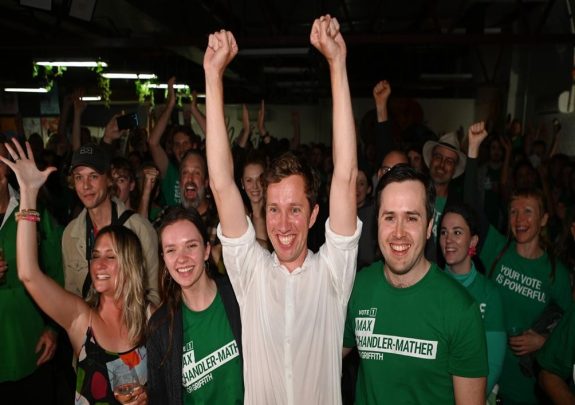
By Callen Sorensen Karklis
Given the state of federal and state politics in Australia and Qld, it’s hard to see the trend towards Teal independents and Greens as an alternative to the major parties phasing out anytime soon. 1 in 3 Australian voters voted for other options. In fact, in Qld the Greens won three seats: Ryan, Brisbane, and Griffith, and two seats from the LNP and one from Labor. The Greens are on track to maintain a strong vote in the Brisbane City Council elections in 2024, most likely on track to win wards in Walter Taylor, Paddington, Brisbane Central and well enough to give a good showing in the Coorparoo, Hamilton, Enoggera, and Holland Park wards. And most likely to do well in these same areas on a state level in the upcoming state election as Annastacia Palaszczuk struggles to get re–elected for a fourth term having been in power since 2015.
But that said, while the Greens may do well in Brisbane which is becoming the heartland of the Qld’s new Greensland around progressive middle-class and younger working-class voters, it will be interesting to see how the LNP track in areas outside of Brisbane – which are likely to flip from Labor to the LNP given current polling projections. In North Qld it’s a contest between the major parties and the Katter Party. But let’s play hypotheticals for future election cycles given the results of 2022.
In outer suburban areas where the moderate middle-class are crying out for a third option, however, I dare say in future elections after a future coalition government there could be the very real chance of a Green or Teal winning seats on the bayside like Bowman or even Bonner. Perhaps one day in my millennial lifetime as younger voters are starting to vote in droves away from the traditional two–party system. As much as Labor can fight the good fight on social issues it has begun to sink its base in a quagmire of an identity crisis with working-class voters looking to more left- or right-wing options due to increasing cost of living issues, housing, interest rates, and fuel prices. With younger voters’ key issues are climate change, struggling economically, and while fighting on social justice issues.
Let’s take the history of a seat like Bowman; I know full well how people voted in this federal seat for the past 10 years (that’s 4 election cycles in that time). I was also a Branch executive for 4 years in a former Labor Party branch in this year working under former Labor MPs, City Councillors, trade unionist, and branch– rank–and file with years of campaign experience. And in 2020 during the state election I assisted a Teal campaign in Oodgeroo. Bowman by 2025 will have been held by the LNP for 21 years, while three of its state seats by 2024 are Labor while one is LNP.
- Capalaba = Labor Safe seat (held by Don Brown) 9.9% ALP
- Springwood = Labor Safe seat (held by Mick De Brenni) 8.3% ALP
- Redlands = Bellwether seat currently held by Labor (held by Kim Richards) 3.9% ALP
- Oodgeroo = LNP currently held (held by Mark Robinson) 4.5% LNP (once a Bellwether)
Current Bowman’s electoral history since 1969 (redistributions):
The more current version of Bowman which also included Bonner from 1969–2004 was held by the following people and parties since 1969:
- Len Keogh, Labor: 1969 – 1975
- David Jull, Coalition: 1975 – 1983
- Len Keogh, Labor: 1983 – 1987 (2nd stint)
- Con Sciacca, Labor: 1987 – 1996
- Andrea West, Coalition: 1996 – 1998
- Con Sciacca, Labor: 1998 – 2004 (2nd stint)
- Andrew Laming, Coalition: 2004 – 2022
- Henry Pike, Coalition: 2022 – 2025
It was 25 years of Labor in public office in the area, while the LNP has been in office for 31 years. Prior to this the only time Labor held office once (James Sharpe in 1913–1917) in this area because Bowman had only become suburban due to development in the late 1960s. Prior to this it was a rural conservative area for 52 years. It was briefly held by Protectionist Richard Edwards – aligned with Labor during the liberal progressive Barton/Deakin governments of early federation – until Edwards sided with the Anti Socialist in 1906. Mind you, that was the era of introducing White Australia but they gave women the vote and set up the Australian public service. It’s safe to say Bowman was a bellwether seat for a good 40 years until 2007–2010 but despite this interesting pattern of the electoral map are showing something that both the major parties should be concerned about.
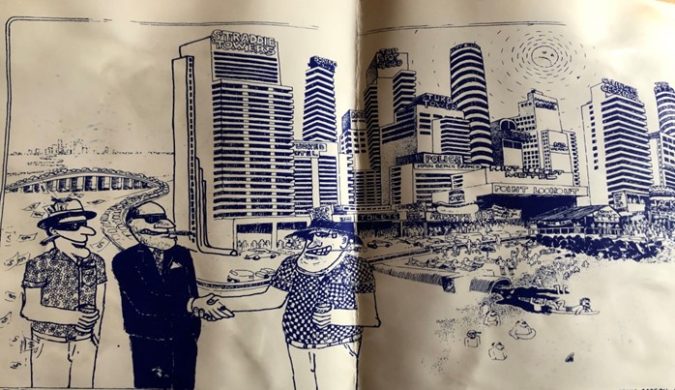
Anti–Bridge to Stradbroke Island campaign in the late 1970s – early/mid 1980s (cartoon)
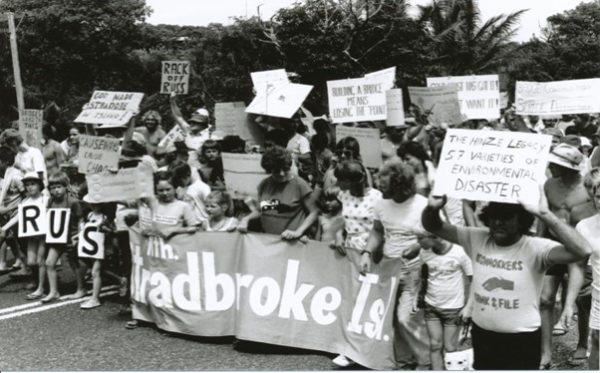
Anti-Straddie Bridge campaigners in the 1980s
Shift to Greens and Teals in Oodgeroo
Although the Redlands City area has not seen any elected public officials represent the Greens party formally (as the Greens were only established as a party in 1991, 32 years ago), there have been elected City Crs who represented interests in line with modern day Greens in several key areas: Namely in the Stradbroke Island, Cleveland, Wellington Pt, and Ormiston areas. There has been Elanor Durbidge in 1969-1973 for the former ward of North Stradbroke Island then known as division 4. Durbidge would later help prominent Aboriginal rights activist Oodgeroo Noonucle (Kath Walker) fight to stop the bridge to Stradbroke Island in the late 1970s and found the group SIMO with residents who endorsed Cr Jenny Cook Bramley (1988-1991). Then there was Independent Betty Groom who was the Cleveland Cr who served for a year and a half (1991-1992) who fought on transparency and environmental protection as well as Geoff Skinner (1982-1988) in Wellington Pt and Ormiston who fought to protect wetlands from overdevelopment on environmental grounds during his time in office and his wife who succeeded him in office, Sue Skinner (1988-1997).
From 2004 until 2015 since the Greens first contested the old state electorate of Cleveland (now Oodgeroo) they held 7–8.8% of the vote. This was roughly between 1908-2263 votes. During the 2015 Qld State Election this is when things became interesting in Cleveland. The Greens vote increased to 3,795 votes up +4.47% (12.04% of the primary vote) when small businesswoman Amanda White ran for their ticket. Whether this was due to the mismanagement of state ALP party office resources into more seats beyond just targeted seats or lacklustre candidates like Tracey Huges from Labor could be a factor. A real shame considering that it was a Labor seat from 1989–2006 when Darryl Briskey and Phil Weightman were MPs.
Conservative born-again Mark Robinson (an ex-biologist) won the seat in 2009 which is ironic considering the Toondah PDA issue. The LNP held onto this seat. In 2017 the Greens vote gradually climbed to 13.7% of the vote by 3,812 votes when army veteran Brad Scott contested for the Greens. Things further became interesting when Teal Claire Richardson contested the election in 2020 securing 21.48% of the vote with 6,349 votes, with the Greens going back down to pre 2004 levels at 1,575 votes at 5.33%.
Labor failing to gain ground on this seat on 8,231 votes and 13,458 votes on TPP. This all up with Labor, Teal, and Greens votes combined was 14,580 votes if preferences flowed. Factors like Labor running a dud candidate with not much support off the back of a wave resources funnelled to sandbagging key seats and gaining others off the back of the pandemic was key to the LNP holding the seat.
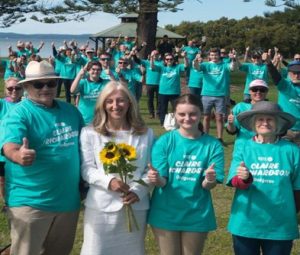 Despite this its key to understanding a growing trend in this area of disenfranchisement with the two–party system growing gradually particularly in Oodgeroo. A big factor in the gradual shift has been how the issues of transition of sand mining on North Stradbroke Island to tourism on North Stradbroke Island as well as the Toondah Harbor PDA issue have both been handled playing a big part on the mainland of Cleveland.
Despite this its key to understanding a growing trend in this area of disenfranchisement with the two–party system growing gradually particularly in Oodgeroo. A big factor in the gradual shift has been how the issues of transition of sand mining on North Stradbroke Island to tourism on North Stradbroke Island as well as the Toondah Harbor PDA issue have both been handled playing a big part on the mainland of Cleveland.
TEAL candidate Claire Richardson with family and supporters during the 2020 race on the (right).
Toondah Harbour PDA Ramsar proposal as per Claire Richardson’s advertisement of what Walker Corp proposed (below).
The Toondah issue was a key factor in Claire Richardson’s local and state campaigns.
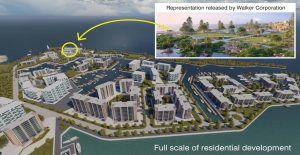
The Decline of the ALP Vote in Bowman
By 21 years Bowman would have been held by the LNP. In 2007 ALP candidate Jason Young secured 41,009 votes compared to the LNP’s 41,073 making it Australia’s most marginal seat during the 2007 Rudd landslide. And in Labor’s 2022 Federal election win under Albanese ALP candidate Donisha Duff only secured 44.5% of the vote compared to the LNP on 55.5% (despite the antics of former MP Laming).
Gradual shift to Greens in Bowman:
- 2007 = 4,475 votes (5.45%)
- 2010 = 8,174 votes (9.97%)
- 2013 = 5,198 votes (5.98%)
- 2016 = 9,012 votes (9.76%)
- 2019 = 11,795 votes (11.99%)
- 2022 = 13, 241 votes (13.02%)
The Toondah campaign has also played a significant impact and role in the rise of the Greens vote since 2016–2022. Particularly as they have become more vocal and visible at community rallies and protest the development, with thousands of people in attendance. Former Bowman candidate Ian Mazlin and Senator Allman Payne with protesters (below):
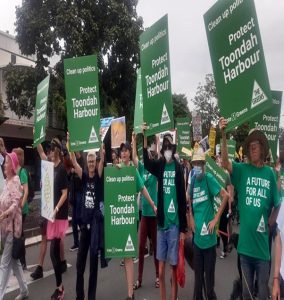
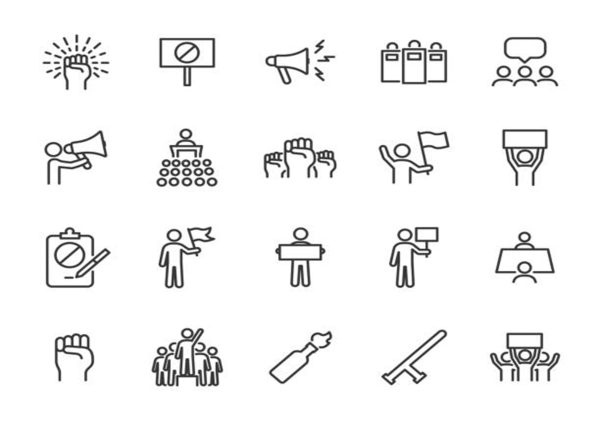
Reasons for the Gradual Shifts in Voting?
- Toondah Harbour PDA Ramsar wetlands issue
- Cost of living crisis
- Rising rates costs (Redlands pays highest CPI levels in SEQ)
- Climate change concerns
- Concerns for green spaces and towards overdevelopment
- Rising Interest rates
- Less funding towards essential services and community groups
- Housing and affordability crisis
- Increasing demands for fuel
- Changing demographics in the geographic area
- Voters want more transparency and accountability in all levels of government
- Less jobs in the area, changing economic conditions in retail and industrial sectors
- Growing disillusionment with the two-party system and major parties
- Less people are turning out to vote and more apathetic to the political process.
We could be seeing the start of a gradual shift with younger and future generational voters towards parties and candidates being elected to office who aren’t necessarily from the old school major party tickets. We could be seeing the start of Labor needing to govern either in a position of supply with either federal or state government without the ability to govern in the majority more and more. With repeats of the 2010–2013 Gillard Labor/Greens agreement more and more likely or Albanese and the Teals/Greens in 2022–2025. This might enhance democracy, rather than hinder it as some claim and warn. Ironically the neoliberal reforms of the Hawke/Keating and Howard governments regardless of party may have disengaged voters more gradually over time due to the harmful impacts of it long term. Neoliberalism has created more disparity, the trade union movement has shrunk in OECD nations such as Australia, and voters are less trusting as privatized corporates have left many out in the elements as many institutional state entities have been gradually sold off. This makes elections particularly more volatile with coalitions between parties and political actors and minority governments more likely. As voters are turning to alternatives hence the rise of populism on the far left and right of the spectrum as well, namely Trumpism in the US.
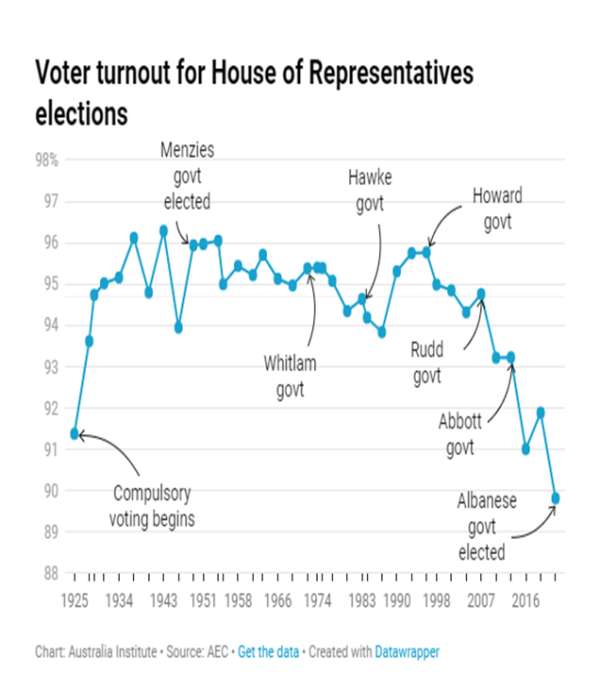
The Rise of the Teal Independents in Redland City Council
On current numbers in Redland City Council there is only one remaining Labor Cr left of what was once an influential base representing the Labour movement and working class. There is now 6 LNP Crs in majority of what has been a City Council mostly dominated 61 years of its history. With one conservative Mayor siding with Labor in a rare coalition to achieve bipartisanship by putting residents first due to his close relationship with then Labor federal MP for the area Con Sciacca and his allies. Both Sciacca and Santagiuliana both had commonality due to their Sicilian descent. Two other Mayors of progressive calibre in office. One Labor; another Independent but aligned with Labor’s interests. Aside from mostly Tory rule Redlands has seen:
- Len Keogh: 1991 – 1994 (Labor)
- Eddie Santagiuliana: 1994 – 2001 (in Coalition with Labor)
(with Labor Cr Ray Bucknall as his deputy from 1997 – 2000)
- Melva Hobson: 2008 – 2012 (Labor aligned Independent)
The Rise and Fall of the ALP in Local Government
In the 1900s–1940s the former Tingalpa Shire Council was mostly Labor aligned due to farming interests backed in with the policies of the then Labor State government. The former Cleveland Shire Council aligned more with the non–Labor conservative side of politics. The farmers of Tingalpa would gradually fall out with Labor over the amalgamation of both Cleveland and Tingalpa Shire council into Redland Shire Council in 1949.
For 18–20 years the ALP was in the political wilderness in Redlands in local government as the Cold War scare mixed in with the supremacy of the National Party converting farming interests which was most of the Redlands for that time, but amid social change and development of the spread of suburban sprawl during the Whitlam era. In 1970 the Labor Party actually ran a ticket in Redlands Shire Council for the first time, winning one seat and again in 1973 securing five seats as an Opposition party led by Capalaba Cr John Bonney from 1973–mid 1970s. Bonney fell out with the ALP over party infighting over a union dispute to do with a business he held shares in. Both Cr George Nothling and Fiedler representing NSI served on the Health Committee as Chair having a hand in the establishment of Redlands Hospital.
The ALP vote decreased to two seats during 1979–1982, then rose to three in 1982–1985, then held out until it decreased to two in 1988–1991, then four during the Keogh administration in 1991–1994 when Whitlam/Hawke era Labor MP Keogh became Mayor, then three in 1994–1997, and four from 1997–2004, three in 2004–2008, and then four in 2008–2012. The height of Labor’s power in Council was during the Hobson era when former Labor aligned Crs held out until 2012 during the bitter days of the Bligh asset sales, and council amalgamations which fortunately didn’t affect the Redlands Council but left a bad taste in voters’ mouths. This saw anybody with any remote involvement with Qld Labor Premier Bligh and Hobson voted out in a landslide in 2012. This saw Labor’s vote fall consistently to two seats from 2012–2020 and then one remaining seat with Cr Tracey Hughes after the 2020 council elections.
This was in part due to Labor Party aligned Crs moving away from opposition to the Toondah PDA to supporting it which led to more support of Teal aligned Independent Crs. This was why once safe seats to Labor in local government in Capalaba were gained by a Teal. Voters felt let down by the ALP on environmental, overdevelopment and increasing cost of living issues.
Current make up of Redland City Council (2020 – 2024):
Current Teal Incumbents: 4 TEAL
- Lance Hewlett
- Wendy Boglary
- Paul Bishop (former actor on Blue Heelers)
- Adelia Berridge
Major Party Incumbents: (ALP and LNP): 1 ALP + 6 LNP
- Tracey Huges (Labor)
- Paul Golle (LNP)
- Rowanne McKenzie (LNP)
- Mark Edwards (LNP)
- Peter Mitchell (LNP)
- Julie Talty (LNP)
- Karen Williams (LNP)
The teal phenomenon I would argue has been occurring under the radar for decades with sparks going as far back as the late 1980s–early 1990s. It just didn’t get traction until the 2022 federal election with widespread media attention of Climate 200’s endorsed candidates six Lower House seats federally and one senate seat. Despite the Climate 200 not endorsing candidates on a local level I would argue Teal–ism independents supporting transparency issues and environmental and cost of living issues has been under the radar gradually emerging as a third way option breaking into the mainstream gradually. This has been the reason why four Independents have become the formal opposition of the LNP in Redlands rather than the former ALP oppositions in past decades.
Two of these Crs have also become Deputy Mayor on two occasions during 2016–2020. Wendy Boglary in 2016–2018 and Lance Hewlett in 2018-2020. The same could be said for other regional or suburban areas across Australia. The ALP has forgotten how to campaign to local government which could have long lasting impacts on their future long term electoral success potential, the same could be said of the LNP. The rise of Teals in Redlands could be a good thing for the City overall in the long term if their success maintains gradually over time, especially if a mayor was elected in 2024. The same could be said of the Greens, winning city council wards in BCC during 2024 council elections. People don’t want major party-political players running power games and cabals. Could the developing trend of voters turning towards centre-left and moderate progressive Independents as an alternative to the ALP in past decades be a key indicator of how people may vote in both state and federal elections? I would argue yes, it is particularly if voters don’t believe their concerns on the following issues aren’t addressed:
- Overdevelopment
- Environment
- Transparency
- Accountability
- Cost–of–living.
It’s clear that the major parties have forgotten the most basic principles “It’s the economy stupid!?” and Roads, Rates, Rubbish!
2020 Local Government TPP election results:
- Claire Richarson (TEAL) = 49.11% TPP
- Karen Williams (LNP) = 50.89% TPP
2020 Local Government Primary election results:
- David Curtin (ALP) = 14.56%
- Claire Richardson (TEAL) = 40.75%
- Karen Williams (LNP) = 44.7%
It’s safe to say infighting on the progressive side and the tug of war between climate turned extinction rebellion activist ex-Labor member David Curtin between Claire Richardson did cost the progressives dearly as the LNP just scrapped through enough to hold Mayor but win a majority on Council as well.
2020 Local Government 2020 Election RCC
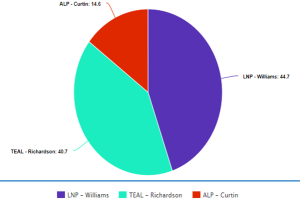
The 2020 Local Government election was the first time a Teal ran with no affiliations to any former ALP Cr on their ticket which occurred when 2008 Mayoral candidate Melva Hobson ran. Hobson ran in alliance with independent progressives and Labor and former Labor affiliated Crs elected in coalition with her, although Independent. In 2020 Richardson ran on her own platform unaligned and allied with mutual independent Cr interests.
Local Government Election TPP 2020 RCC

The strongest indicator of a TEAL possibly doing well in a future Bowman division election for the House of Representatives is on a federal level, ncluding the Oodgeroo State Election in 2020 which could have flipped if preferences flowed consistently but with the Covid–19 pandemic occurring during this cycle may have had an effect due to governments in power statistically doing better during a time of crisis. In the event of a normal state election without the backdrop of an international or domestic crisis, a Teal or Greens candidate could become competitive in the state seat of Oodgeroo potentially.
Oodgeroo State Electorate 2020 Qld State Election
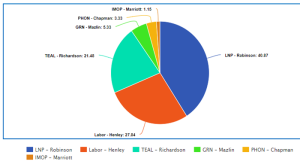
Lessons for a Future Teal Mayor?
There are lessons for an Independent Mayoral candidate like Jos Mitchell running in the current race. Running on a Teal platform, she could well win based on the recent statistical voting patterns in recent years. Namely analysing the achievements of Keogh, Santagiuliana, and Hobson would be key, as well as studying and scrutinizing the lessons of longevity that effected the Tories in long cycles in government time and again. Every Mayor or their deputy has had a key crowning achievement from their time in office. There has only been 14 years of progressives in office in Redlands. Much of which mirrored similar policies to Jim Soorley’s Labor administration in 1991–2003 where he advocated strongly for Brisbane City Council (BCC) to cater for an emphasis on customer service for ratepayers. I would personally rate the best of the RSC/RCC Mayors as Santagiuliana, Keogh, Hobson, followed by Wood, Price, and Gengrich.
- Keogh era (1991 – 1994)
- Reorganized Council to be more customer service focused.
- Established environmental policies – purchased environmental sensitive land.
- Habitat protection areas and tree protection bylaws in place
- Planning for Capalaba Library and Council facilities established.
- Santagiuliana/Bucknall era (1994 – 2001)
- Kerbside recycling
- Improved pensioner subsidy level
- Improved public transport for bus travel locally.
- Oversaw the construction of Capalaba Library and Shopping Centre
- Recognition of native land in 1997 agreement
- Ensured conservation of Redlands green spaces and ecosystem.
- Hobson era (2008 – 2012)
- Improved customer service
- Worked with State and Federal Government stimulus GFC.
- Implemented the Redlands 2030 community plan.
- Native Title Act with State Labor Government introduced.
- Upgraded the Redlands Performing Arts Centre.
For the Tories in power, it was Price (1949–1961) making the Redlands the fruit bowl of Qld, for Wood (1961–1982) it was keeping the railway secure while maintaining farmers rights, while for Gengrich (1982–1991) it was developing the controversial Raby Bay canal estates on once sensitive wetlands while working with Joh Bjelke Petersens National Party government to electrify the Cleveland railway, but also the Redlands Performing Arts. It’s hard, however, to determine actual policy results for the more recent LNP placeholders in power from the Secombe aside from his one saving grace the Redlands Arts Gallery, and William’s eras aside from continual overdevelopment and cutting of red tape amid scandals like the drink driving fiasco earlier this year with very little policy initiatives achieved.
List of References: see election result stats via ECQ and AEC.
Electoral Commission Qld. 2008. Redland City Council – Mayoral Election – Election Summary.<https://results.ecq.qld.gov.au/elections/local/lg2008/RedlandCityCouncil/results/Mayoral/summary.html> accessed 08 September 2021.
Redlands City Council. 2010. Government of the Redlands: Redland Shire Council/Redland City Council Chair/mayors, councillors, shire clerks/chief executive officers. June 1949 – 2010. <https://web.archive.org/web/20110329181154/http://www.redland.qld.gov.au/SiteCollectionDocuments/_About_Redlands/History/People_Places/RSCcouncillors_1949_Jan2010.pdf> accessed 6/11/2023
Shields, T. 2022. Voter turnout in the 2022 federal election hit a new low, threatening our democratic tradition. Australian Institute. <https://australiainstitute.org.au/post/voter-turnout-in-the-2022-federal-election-hit-a-new-low-threatening-our-democratic-tradition/> accessed 6/11/2023
Smee, B. 2020. Queensland election’s ‘parallel with Warringah’: why independent Claire Richardson could topple LNP incumbent. QLD election 2020. The Guardian < https://www.theguardian.com/australia-news/2020/oct/29/queensland-election-warringah-independent-claire-richardson-lnp-mark-robinson> assessed 6/11/2023
 Callen Sorensen Karklis, Bachelor of Government and International Relations.
Callen Sorensen Karklis, Bachelor of Government and International Relations.
Callen is a Quandamooka Nunukul Aboriginal person from North Stradbroke Island. He has been the Secretary of the Qld Fabians in 2018, and the Assistant Secretary 2018 – 2019, 2016, and was more recently the Policy and Publications Officer 2020 – 2021. Callen previously was in Labor branch executives in the Oodgeroo (Cleveland areas), SEC and the Bowman FEC. He has also worked for Cr Peter Cumming, worked in market research, trade unions, media advertising, and worked in retail. He also ran for Redland City Council in 2020 on protecting the Toondah Ramsar wetlands. He also advised the Oodgeroo Teal campaign in 2020. Callen is active in Redlands 2030, the Redlands Museum, and his local sports club at Victoria Pt Sharks Club. Callen also has a Diploma of Business and attained his tertiary education from Griffith University. He was a co-host from time to time on Workers Power 4ZZZ (FM 102.1) on Tuesday morning’s program Workers Power. He has also worked in government. Callen is now a Qld State Council delegate for the Redland Greens.
Like what we do at The AIMN?
You’ll like it even more knowing that your donation will help us to keep up the good fight.
Chuck in a few bucks and see just how far it goes!
Your contribution to help with the running costs of this site will be gratefully accepted.
You can donate through PayPal or credit card via the button below, or donate via bank transfer: BSB: 062500; A/c no: 10495969










4 comments
Login here Register here-
Hotspringer -
wam -
Terence Mills -
corvusboreus
Return to home pageLet her rip! We need an alternative to the duopoly.
A pleasant read but the loonies are not up to it they had a bullshit, but clever, change from greens to state greens and capitalised in Brisbane, by disingenuous references to the floods. That may not work next election.
Will the teals struggle as the LNP strengthens?
Still if labor sitting members remain loose enough labor people may vote loonie to get them above the lnp and bye bye labor hello loonie.
I note that in the most recent by-election in Qld in August (Fadden – Stuart Robert’s old seat) that the Greens had a 4.6% swing away from them.
https://www.abc.net.au/news/elections/fadden-by-election-2023
TM,
At a glance, it looks like the majority of the Fadden GRN bleed was picked up by Suzette Luyken of Legalise Cannabis (+7.6%).
Unsurprising.
https://amp.abc.net.au/article/101083878#amp_tf=From%20%251%24s&aoh=16996525092708&referrer=https%3A%2F%2Fwww.google.com
About 25-33% of Australian adults (voters) are occasional or regular recreational ‘marijuana’ users, and cannabinoids have been officially accepted by the medical profession as a legitimate prescription medication with a range of therapeutic and remedial uses (without mentioning the swathe of other material uses for hemp derived products).
LC were the ‘little tug boat that could’ of the last federal election, and may well rise to become a ‘highly’ influential force in Australian politics (at least until their central reform issues are legislatively addressed).